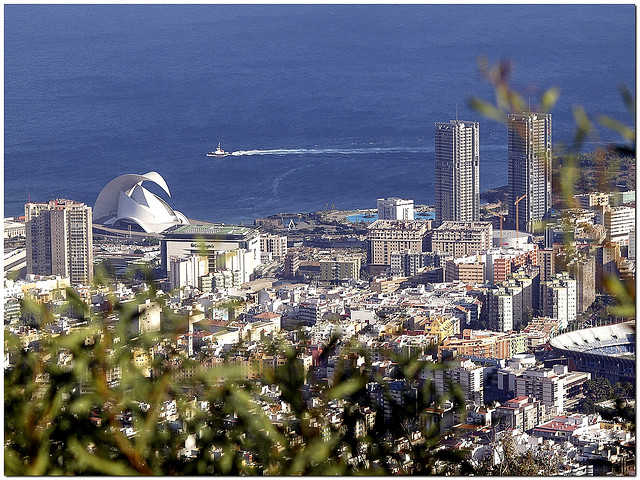China
Arm Race between China and India; Possible Area of Understanding and Cooperation Between the Two Giants
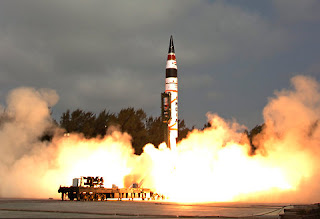 |
| Agni V, India’s indigenous ICBM Indian Ministry of Defense, via Associated Press |
Interview with Gennady Yevstafiev, retired Lieutenant General of the Russian Foreign Intelligence Service.
Interviewer: Yekaterina Kudashkina
Mr. Yevstafiev, thank you so much for joining us now. So, the way I’m looking at various reactions of the successful Agni-V Indian intercontinental…
The first test launch was basically successful. It is a great achievement of the Indian research technology and we have to admit that India has become one of the major missile countries in this world. And it was developed for a number of years. Initially the idea was to develop Agni-III into number IV and number V, but then number IV somehow has not been tested yet and now we have Agni-V. This is a formidable missile with the range of, some people say it is 5000 kilometers, but I’m afraid they are misleading the public opinion because there are people who believe that it has a potential of 8000 kilometers. And of course the range of throw is a classified information but nevertheless between 5000 and 8000, this makes it intercontinental strategic missile.
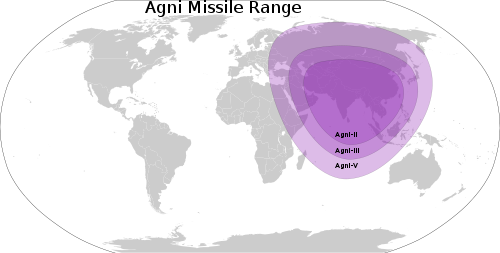 |
| Approx. Range of Agni Series Missiles |
The missile was coming under the Strategic Forces command. So, it is in a proper hands and it has been launched from a traditional place, there is a Wheeler Island where Defense Research and Development Organization of India has its sights. And it would take a number of test flights, not less than four or five, before a missile itself will become operational. Now it is a success but it is not yet operational and it will also take three or four years before they really develop what they say. They want to have at top of this missile MIRV system – Multiple Independently Targeted Vehicles with a number of, between two and ten, separately targeted nuclear bombs. And it will take some time, this technology is not yet ready.
And what we have of course it is a huge missile, it is almost 18 meters, and its diameter is 2 meters, it is really a robust and solid mechanism. It can carry about 1500 kilos of weight of load and it is enough to carry a vessel with a nuclear bomb or to have four or five MIRV bombs which could present a very serious difficulty for missile defense. And we have to give credit to Indians, they have mastered, which has taken more time in bigger countries like the United States and Russia, they right from the beginning have put the missile into a canister which is sealed and the missile could be kept for quite some time before it is being thrown out from a canister and after that it starts moving. Of course we know the Indians have serious successes in navigational systems, in GPS systems that’s why as far as guidance is concerned that’s quite a reliable thing because the standard of Indian electronics and space technology evokes respect.
So, having fired this missile Indians have stated by the firing test that they have joined the club of the great missile powers. Being the nuclear state they have declared that they have a very universal weapon for the future developments because of course they have their own threats perceptions and risks. And that’s why it has been done according to their view of developing situation. If you have a look on how far it can fly – it covers all China and it can come up to Europe. I wonder if these people in Europe, would they think about a threat from a third world country and what do they think about their missile defense system because it is much more developed than anything we have in Korea or in Iran for that matter.
Indian researcher Bahukutumbi Raman says that Agni-V is, like he put it, a Chinese centric missile. And he says that once it is put on operation, it can reach those parts of Eastern China on which its economic prosperity depends. Now, if that is really so? Are we going to see something like arms race between China and India?
The arms race between China and India is going on for the last 15-20 years. The range of Agni-V covers the whole of China, not only the areas on which the Chinese prosperity depends.
In terms of Indian perception of threats of course in the Indian General Headquarters, among the military China is the major threat and that’s why they have found now, say by 2015 they will have a reliable weapon to respond to Chinese threat. But on the other hand I think it will make the whole situation, as far as stability is concerned, more predictable and both sides, I would say, would be very cautious about playing with muscles.
But it is a certain warning to other countries around India, in the Indian Ocean and in other places that India has a potential and they have to deal with India very cautiously, they should not irritate India and it has Indian Ocean at her disposal because with this kind of missiles, they will have a number of them, they would control the whole area. And it happens, interestingly enough, it happens in times when Americans are trying to develop their assets and potential in Australia. And America is preparing for some sort of a showdown with China sooner or later. In this situation we have a new player, very important player who has got something to say.
And is the player going to take sides in that situation?
No, I don’t think India will take any sides in this because Indian policy is very mature. Indians know the border of their national interests and they won’t go a step over this border. They know the Chinese points of aim, so to say, which they should not step on. But in a long run I think it would play well in containing the United States.
Containing the United States?
Yes, in the long run, especially if China and India would agree among themselves and would really divide the spheres of interests, it could be a very serious reminder to the United States that they have to behave in this area because they are not the only one country which possesses this kind of formidable arsenal of weapons.
But interestingly enough India has close cooperation with the United States in nuclear matters. So, do you think that could be a leverage for the United States to apply some pressure to India?
No, I don’t think so. You know, the agreement with Bush Administration signed with India about scientific cooperation, but mainly in a nuclear field, in 2007 is of the particular interest to the United States because they know the Indians have a huge energy program which is based mostly on, due to rather poor energy resources, it is based mostly on the development of the nuclear industry. We benefit from this idea of Indians develop nuclear industry, Kudankulam which we are going to convert into something very spectacular.
But the Indian request is huge because Indians are planning within 20-25 years to build about 50 nuclear energy reactors and American industry which is not producing nuclear reactors now for the use in the United States, they have stopped producing them to the United States industry, they badly need some market for the advanced technologies in that. By the way, French are in the same boat, though of course French industry is of a much smaller size. That’s why the fight for Indian market in nuclear technology is basically a commercial fight for the share of Indian market. But the market is going to be so big that for the next 15 years there will be enough space for everybody to work on this market.
Mind you that Indians are very serious customers and they demand a lot of set benefits when they sign agreements and these set benefits would of course sponsor the Indian industry in developing their own technologies. And sooner or later they will produce more than 50% of what they need for themselves.
And now of course the final question based on your assessment. Just how good are the chances, the way you see, that eventually India and China might come to terms? Because now we’ve got more than half a century standing conflict between the two. And on the other hand there are so many forces which would be trying to prevent the two countries reaching any kind of agreement.
That’s true. And for example America very cautiously but they do have the share of really provoking the rift between the two countries, but very carefully. They don’t want to be caught red handed.
This is very difficult to predict but both countries are quite mature in their diplomacy and foreign policy. Both countries understand the level of their pretensions over the influence in this world and that’s why unless there is something very special, and very special in this case might be Pakistan which is an ally of China. But Indians are cautious with Pakistan, they don’t want to take upon themselves the burden of handling the affairs of this almost fail state and they really don’t mind the Chinese working there and having their share of influence in Pakistan.
But on the other hand there is no serious problem of fighting for resources up to now between China and India because China is trying to master the situation in the Pacific Ocean zone, and especially on those islands like Paracel or on other kinds of isles, and these are the priorities for the Chinese. They don’t show much their flag in the Indian Ocean. From time to time they come but just to show that there is the Chinese Fleet and so on. But they understand and they see that the Indian Ocean is the zone of influence of India, and they don’t provoke India for all kinds of responses.
The same thing with India, it is quite far from this Pacific Ocean area. It has a lot of things to do around the Indian Ocean and that’s why they are not a competitor for Chinese in the area. Whereas the United States, Japan, maybe even Indonesia, Vietnam, these countries are more anti-Chinese in a sense that they are afraid of Chinese, they don’t want to have the increased Chinese influence. And that brings me to some sort of a hope that understanding this Chinese and Indians, especially in times of possible Chinese-American tensions, they would keep quite good relationships among themselves.
Well, let’s hope so. Though there is the painful issue of Tibet.
Tibet of course is a point of disagreement but with the course, the way things develop, Indians will soon be deprived of their hope to have something in Tibet which would be more favourable to their heart then what is now. Chinese are moving there slowly but I would say resolutely and I don’t think Tibet is having some chance of independence.
And what about the new port which the Chinese are building in Pakistan?
Pakistan is a different thing. And Pakistan basically strategically is surviving on the strategic partner agreement with China. But times change. I believe that Pakistan in many respects is a fail state. And Indians do understand this and they don’t want to touch Pakistan in terms of military invasion.
But still, are the Chinese interested in getting the port and getting access into the Indian Ocean ultimately?
Not now. Time will come but now they have different priorities. I think they have a priority of China Sea oil resources and in the surrounding countries. In American opposition to this, they have the priority of Taiwan, deciding the future of Taiwan in some way which would be acceptable and they are very flexible on the way how to decide. So, for the next 15-29 China has enough to do in this area and if it is not going to provoke anybody on the other side of their borders, and they would prefer to have some sort of détente with India, this will work.
Mr. Yevstafiev thank you so much.
China
Nepal Hindu Rashtra: Time to Wrap Up Communism?

Nepal abolished the Constitutional Monarchy in May 2008 and declared itself as a Federal Democratic Republic. There was a new hope in Nepal as it was becoming world’s newest democracy even though it had dissolved the Hindu Rashtra. However, the democracy in Nepal immediately got into the tight grips of leftists and communists backed by China. It has been almost 12 years since monarchy was abolished in Nepal. Interestingly, the Himalayan country has already seen 11 Prime Ministers in this period. Thus, leaving the Nepalese people still yearning for good and stable governance.
Re-establish Hindu Rashtra
As the political instability is growing in Nepal, people are demonstrating concerns about the future of the country. In fact, Nepalese citizens are unhappy with frequent interference by China and India influencing its unstable communist regime. More voices are now growing in support of reinstating the Monarchy and declaring Nepal as world’s only Hindu Rashtra (which by default offers full religious freedom to other religious minorities as per Hindutva concept of Sarva Dharma Sama Bhava – all paths lead to one).
Former Deputy Prime Minister of Nepal, Kamal Thapa said that if political parties do not recognize the seriousness of reinstating the monarchy, then the country will head for a period of darkness. “Recently, we’ve had high-ranking officials from India and China come to Nepal to try and solve problems within the ruling party,” he said. “We cannot let others dictate what we want to do.”
Communist Party All Set to Suppress Protests, By Force
Kamal Thapa has firmly demanded an all party meet to discuss reinstating of monarchy. Throughout the month of December, 2020 Nepal has seen anti communism protests across the country in support of reinstating the monarchy and Hindu Rashtra. Most importantly, the demand has become a nationwide mass people’s movement. So much so that the communist regime had to send a directive to 77 districts in 7 provinces. The directive suggests suppressing the protests by force. Nevertheless, Rashtriya Prajatantra Party and other royalist groups have ignored this threat from the communist regime. Protester groups have pledged to strengthen the protest in the coming weeks.
Nepal: Demonstration held in capital Kathmandu, demanding restoration of monarchy in the country. pic.twitter.com/TFjmKu9U9Z
— ANI (@ANI) December 5, 2020
Role of China – Hope for Communism in Nepal
China’s ambassador to Nepal is known to have very close relationship with Nepalese Communist regime. In fact, She has been super effective in tilting Nepal’s posture towards its ideological partner, China. One of her greatest achievements in 2020 was artificially manufacturing a border conflict between Nepal and India. Consequently, souring relations between the two Hindu majority nations. In addition, she managed to silence Nepal’s communist government after China took one of Nepal’s border villages under its control. However, recent political turmoil in Nepal and a renewed demand for reinstating of Hindu Monarchy is showing that the situation is now out of Chinese hands
Role of India
Year 2020, was not a good year for India and Nepal relations. India was busy in controlling domestic Covid cases. On the other hand, China had launched an invasive campaign into Indian territory. In addition, India is always busy with Pakistan on its western borders. However, the surprise came to India when China was almost successful in creating a new border tension between India and Nepal.
Those who do not know about Indian government should note that the current ruling party in India finds itself ideologically opposite to communism. This further creates differences between the two countries.
Communist party in Nepal has blamed India for supporting the ongoing anti communism protests in Nepal. However, former advisor to Nepal’s PM has suggested there is no proof that India is fueling pro Monarchy, anti communism demand in Nepal.
Nevertheless, There are certain influencers in India who have, in their personal capacity, expressed support for reinstating the Hindu monarchy. Yogi Adityanath, who is the Chief Minister of an Indian state bordering Nepal, said in 2015 that Nepal should declare itself a Hindu Monarchy. Readers should note that in 2015 Yogi Adityanath was not the Chief Minister yet. However, today he is not only popular in south of Nepal, his popularity is growing in Nepal as well.
Will The World See the first Hindu Rashtra?
It is difficult to answer this question at this moment. However, Nepalese communist government could not resolve the political instability and in December 2020 Nepalese government dissolved the parliament. Nepal will see next elections in April – May 2021. Hopefully, the world will see Nepal’s 12th Prime Minister in 13 years or may be a Hindu King? Royalists and protester groups have expressed confidence in winning next elections. We have our eyes on Nepal for updates.
China
Ridiculous Tariffs on Wines – China Australia Trade War Explicated
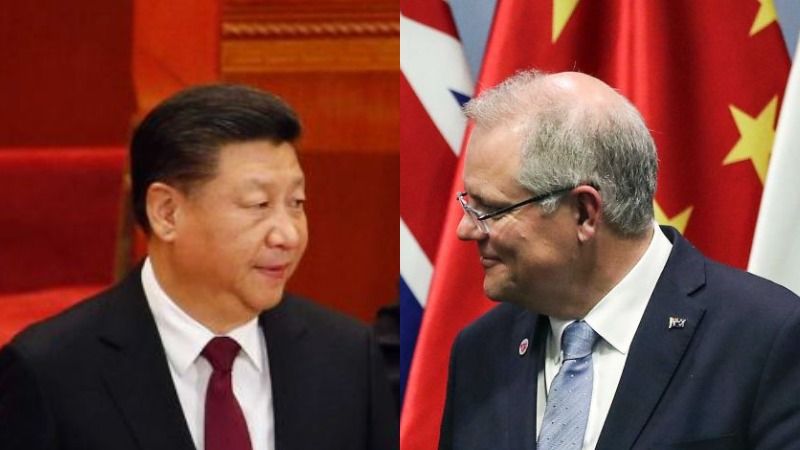
Earlier in November 2020, Communist China slapped Ridiculously high tariffs up to 212.1% on Australian wines. These tariffs were in the response of ongoing trade war between Communist Party of China and Australia. China is the biggest importer of Australian wines making up a whopping 39% of Australia’s total wine export. Australia has already raised concerns at a WTO meeting about China taking measures against its barley, wine, meat, dairy, live seafood, logs, timber, coal and cotton, according to a reuters report.
How did China – Australia trade war begin?
China and Australia shared one of the best times in their relationship after Kevin Rudd from the centre-left Labour party came to the power in Dec 2007. During his leadership Australia decided to pursue appease China policy which included steps such as:
- Chastising Taiwan for its renewed push for independence and reiterating support for a one-China policy in favor of People’s Republic of China. (Source: The Age)
- Signing a A$50 billion deal with PetroChina in 2009 (largest contract ever signed between the two countries) that ensures China a steady supply of LPG fuel until 2029.
- Unilaterally announcing departure from Quadrilateral Security Dialogue to appease China.
Nosediving of China – Australia Relationship
The course of this partnership changed when Julia Gillard from the centre-left Labour Party took over the leadership and initiated closer partnership with United States. This included revival of interest in Joining Quadrilateral Security Dialogue and stationing of US troops near Darwin, Australia.
In 2013, Tony Abbott from centre-right Liberal Party took over the leadership. During his term Australia saw some confusion in its China Policy. His Defence Minister Senator David Johnston told in a statement that Australia is seeking to balance their relationship between China and the United States. It was during his term when Australia and China established a Free Trade Agreement.
However, the relationship between Australia and China took a downturn in 2015 when Malcolm Bligh Turnbull from the centre-right Liberal Party came into power. This is the point in history which has led to current trade war situation between Australia and China.
- Australia became the strongest opponent of China’s territorial claim in South China Sea.
- Banned foreign donations to Australian political parties and activist groups in a move to target Chinese interference in Australian democracy.
- Revived Quadrilateral Security Dialogue with United States (Donald Trump), India (Narendra Modi) and Japan (Shinzo Abe). This was the time when Quadrilateral Security Dialogue saw hope of becoming something bigger as all four countries had centre-right governments who had a clear China Policy.
2019 Onwards: China – Australia Trade War
In 2019, relationship between the two countries further took a dip with Scott Morison from centre-right Liberal party becoming the Prime Minister. During his leadership:
- Australia signed a letter condemning China’s mistreatment of Uyghurs and other minorities.
- Suggested investigating the cause of Covid 19 in April 2020, which resulted into an angry response from China threatening to reduce Tourism and Trade.
- Opposed the Hong Kong National Security Law in June 2020.
- Reiterated its support for ethnic minorities in China and freedom in Hong Kong in October 2020
- Demanded a formal apology from China for posting a fake image of an Australian soldier holding a bloodied knife against the throat of an Afghan child
In conclusion, these continuous attack on China made China so angry that they deliberately leaked a list of 14 points suggesting why China is angry at Australia
China’s attempt at “buying” left wing politicians around the world
Recent trend is suggesting China’s attempt at “buying” influential left-wing politician around the world. In November, 2017 Australia’s Labour Party’s MP Sam Dastyari went against his own party on South China Sea. He later quit his party after he was found of taking financial favours from China.
In 2008, India’s Centre-left party – Indian National Congress signed a Memorandum of Understanding with Communist Party of China. Its contents are still hidden from the Government of India and the people of India.
Recent US Report has shown concern on President Elect Joe Biden not clearing doubts on his China policy.
How Can we Help Australia Post Ridiculous Tariffs on Australian Wines?
In 2020 China has directly or indirectly impacted many of our lives. Some of us have lost our jobs, some of us are taking a reduced salary. In fact, some of us are sitting at home instead of travelling; while some of us have lost our loved ones only because of communist party was incapable of controlling a virus outbreak.
As the entire world is struggling with this virus, Chinese economy continues to be on path of surpassing the US. Therefore, we should pledge to minimize buying Chinese products. It might be impossible to completely boycott Chinese products, but we can at least minimize it.
Install Cultivate Chrome Extension (non sponsored/affiliate link – We are not getting paid to post this). This plugin works on both Google Chrome and the new Microsoft Edge. It helps you understand the origin and seller location of a product on Amazon. It is a great tool to minimize your dependence on Chinese products. If you are lucky, this extension will also suggest some Made in USA alternatives
Buy Australian Wines – Australia desperately needs a new market for its wine and other products. This New Year and Christmas season, we should pledge to celebrate with at least one Australian wine!
China
What a Rising Xi Jinping Means for China and the World
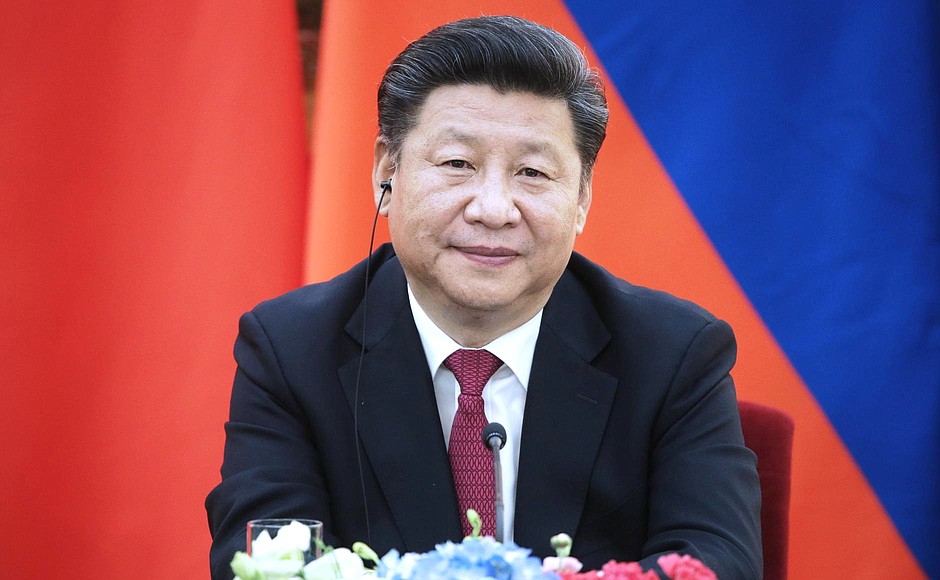
Source: en.kremlin.ru
“Watch this man.” These were the three words used by the founding father of Singapore Lee Kuan Yew to describe a relatively unknown Xi Jinping while he was yet to become the President of the People’s Republic of China. Today, in addition to being China’s “paramount leader”, Xi is arguably the most powerful man in the world, and even if leaders across the world were doubtful about it till now, the developments in the previous week were sure to make them think again.
19th Party Congress: How it unfolded
Xi today, Xi forever?
The Communist Party of China assembled the previous week for its 19th Party Congress, a political summit that takes place every five years to decide upon the country’s future and the future is precisely what Xi has fixated his eyes upon. According to the current rules, Mr Xi must step down as the leader when his term ends in 2022 and as tradition dictates, a successor must be appointed. While only time will reveal whether Mr Xi steps down from the presidency at the end of his term, it increasingly looks that he is not keen to do so, having failed to hint towards any successor for the time being. His apparent intentions to stay put were further solidified with the appointment of the new members to the Politburo Standing Committee, the highest decision making authority in the country after the president. Each of the members appointed to the body is over 60 years of age, which means that they are highly likely to retire when their term comes to an end with the next meeting five years later. Interestingly, two-thirds of them are also known to be Mr Xi’s loyalists.
Xi Jinping Thought: A force to be reckoned with
“Xi Jinping Thought on Socialism with Chinese Characteristics for a New Era” or the “Xi Jinping Thought” for short was written into the party’s constitution at the end of the Congress. The thought consists of 14 principles calling for deep reforms, conserving the environment, the party’s complete control over the army, and the importance of the unification of the country. The development was highly publicised and with good reason. With the “Xi Jinping Thought” embedded in the constitution while still being in power, Xi Jinping has drawn comparisons from all over the world to Mao Zedong himself. Moreover, he has ensured that anyone that opposes him will do so at the cost of their removal from the party. When Xi asked the delegates at the end of his address for any objections, shouts of “meiyou” which means “none” rang through the Great Hall of the People.
Mr Xi has declared the start of a “new era” for China, and undoubtedly for the entire world. It is therefore important to ask what significance these developments hold for the country and for the world at large.
What this means for China
The inclusion of Xi’s thought in the constitution means that the same will be taught in schools, colleges, and other institutions throughout the country, infusing his ideology among the Chinese on a cultural level. Abraham Denmark, director of the Asia program at the Wilson Center puts it aptly when he says that the move “greatly increases, … broadens, and deepens Xi Jinping’s personal power within the Chinese system”.
The president has already found a wide support of the Chinese population with his push for modernisation and his crackdown on corruption has been hugely popular among the masses. Since his election in 2012, Mr Xi’s anti-corruption drive, famously known within the country as the “tiger and flies campaign” has either disciplined or expelled nearly a million party members. As his stance on corruption remains as stern as ever, many have come to view it as a political tool used by him time and again to get rid of political rivals. However, the corruption drive has undoubtedly proved to be effective and fruitful for the country’s business climate.
While Mr Xi’s crackdown on corruption has garnered immense coverage, the crackdown on humans rights activists and NGOs has not received its fair share. China has struggled for decades in its battle for free speech. In 2015, many human rights lawyers were detained and many international NGOs faced stricter curbs to keep them from functioning. As the president has left little room for any opposition within the party, the authoritarianism and censorship are by no means expected to be relaxed, ensuring that there is no opposition from outside the party as well.
Powerplay: China’s standing on the global stage
Donald Trump was among the world leaders who wished the Chinese president when he congratulated him on his “extraordinary elevation”. The reverence he holds for Mr Xi was quite apparent when he said: “some people might call him the king of China.” The surprise, however, came when North Korea’s Kim Jong Un congratulated the president on his “great success” since the two leaders are not known to be fond of each other. The intent here is clear. Both sides need a China that is continuously growing in power on their side in their stand against each other, and that means a closer association with Mr Xi. Chinese influence in the world is unlikely to stop there.
While speaking to CNN, James McGregor, author of “No Ancient Wisdom, No Followers: The Challenges of Chinese Authoritarian Capitalism”, mentioned that “given the chaos in Washington and also the dysfunction in Europe, the world is looking for leadership.” Mr Xi enjoys a great level of stability and largely unquestioned authority in a time where the leaders of Western democracies face intense competition at home. As such, his message to his party and to the world is clear: in the coming decades, China will “stand proudly among the nations of the world” and “become a leading global power. ” However, it will do so on its own terms, emphatically rejecting the Western political models.
These intentions are perhaps best evidenced by The Belt and Road initiative, China’s attempt at connecting Europe, Asia, and Africa with each other through a modern take on the Silk Route, into which it has already pumped hundreds of billions as loans and aid to countries across all three continents. While the project has been met with opposition from Japan, India, and the USA, many of China’s neighbours have expressed their support for it, which speaks of its influence on the global stage.
With the people’s army under the control of the party, Mr Xi also looks to achieve the twin goals of increasing the military might and the protection of China’s sovereignty. “We will not tolerate anyone, using any means, at any time to separate one inch of land from China”, he said in his address which is seen as a warning to both Hong Kong and Taiwan. Enhancing combat capability is also linked to the Chinese interests in the South China Sea, where its activities of building and militarisation of islands have received backlash from the international community.
“If one is big”, Mr Xi said on the final day of the Congress, “one must act big.” There’s no doubt that Mr Xi intends to put these words into action at the global level. Lee Kuan Yew once rightly pointed out about China that the world would do well to remember: “The size of China’s displacement of the world balance is such that the world must find a new balance. It is not possible to pretend that this is just another big player. This is the biggest player in the history of the world.”
References:
http://www.cbc.ca/news/world/china-congress-xi-jinping-petricic-1.4371251
https://www.theatlantic.com/international/archive/2017/10/china-xi/544035/
-

 Technology12 months ago
Technology12 months agoHow Virtual Fly Elevates the World of Flight Simulators
-

 Travel12 months ago
Travel12 months agoImmerse Yourself in Nature: Explore Forest Bathing with a New Guidebook
-
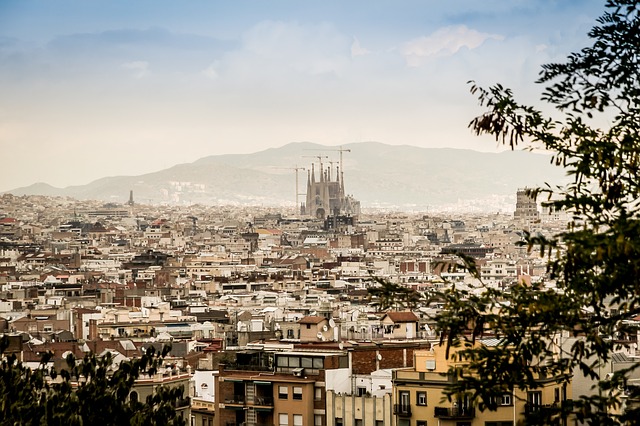
 Europe12 months ago
Europe12 months agoBarcelona and Athens: cities that will leave an everlasting impression
-

 Health12 months ago
Health12 months agoExperience in clinical quality: What is it, and why is it important?
-

 Travel9 months ago
Travel9 months agoEnjoy a luxury holiday in Zanzibar
-

 Culture and Lifestyle8 months ago
Culture and Lifestyle8 months agoDo you want to surprise a special someone?
-

 Business8 months ago
Business8 months agoServiceNow Development Consultancy: Business Process Automation as Disruptive Technology
-

 Environment8 months ago
Environment8 months agoThe Future of Fashion: The Rise of Eco-Conscious Brands in the Luxury Market






